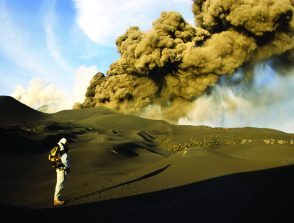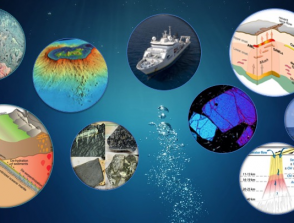Uncovering the lost eruption of Santorini
15/05/2024
IPGP - Îlot Cuvier
11:00
Séminaires Géosciences Marines
Salle 310
Jonas Preine
University of Hamburg
Caldera-forming eruptions of silicic volcanic systems are among the most devastating events on Earth. By contrast, post-collapse volcanic activity initiating new caldera cycles is generally considered less hazardous. Formed after Santorini’s latest caldera-forming eruption of ~1600 BCE, the Kameni Volcano in the southern Aegean Sea enables the eruptive evolution of a recharging multi-cyclic caldera to be reconstructed. Kameni’s eruptive record has been documented by onshore products and historical descriptions of mainly effusive eruptions dating back to 197 BCE. We combine high-resolution seismic reflection data with cored lithologies from International Ocean Discovery Program Expedition 398 at four sites to determine the submarine architecture and volcanic history of intra-caldera deposits from Kameni. Our shore-crossing analysis reveals the deposits of a submarine explosive eruption that produced up to 3.1 km3 of pumice and ash, which we relate to a historical eruption in 726 CE. The estimated volcanic explosivity index of magnitude 5 exceeds previously considered worst-case eruptive scenarios for Santorini. Our finding that the Santorini caldera is capable of producing large explosive eruptions at an early stage in the caldera cycle implies an elevated hazard potential for the eastern Mediterranean region, and potentially for other recharging silicic calderas.
Join Zoom Meeting
https://cnrs.zoom.us/j/91083942619?pwd=VnZWU2d2TUk2Y1pMV01mUTB0VFMxZz09
Meeting ID: 910 8394 2619
Passcode: v920sw






